TLDR The study concluded that androstendione and DHEA are important for diagnosing high male hormone levels in women with excessive hair growth.
In a 2008 study involving 464 hirsute women, researchers found that 77.6% met the clinical criteria for hyperandrogenemia, with 78.1% of these having hyperandrogenic hirsutism. The study revealed that androstendione and dehydroepiandrostendione (DHEA) are significant markers for diagnosing hyperandrogenemia, while dehydroepiandrostendionesulfate (DHEAS) was not useful. Despite normal total testosterone (T) concentrations in 72% of patients with secondary hirsutism and a normal free androgen index (FAI) in 55%, these measures alone were deemed insufficient for a complete clinical workup. The study also indicated that adrenal disorders or congenital adrenal hyperplasia (CAH) might be more common in hirsute women than previously thought, with more than 90% of participants showing criteria for adrenal enzyme deficiencies or polycystic ovary syndrome (PCOS). The authors suggested that DHEA and androstendione should be included in the diagnostic process for hyperandrogenemia.
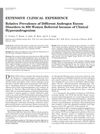 352 citations
,
January 2006 in “The Journal of Clinical Endocrinology and Metabolism”
352 citations
,
January 2006 in “The Journal of Clinical Endocrinology and Metabolism” Most women referred for excess male hormone symptoms had polycystic ovary syndrome (PCOS), with other conditions being less common.
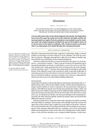 271 citations
,
December 2005 in “New England journal of medicine/The New England journal of medicine”
271 citations
,
December 2005 in “New England journal of medicine/The New England journal of medicine” The document likely offers guidance on treating a woman's excessive hair growth, considering her symptoms and obesity.
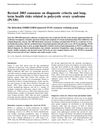 4025 citations
,
December 2003 in “Human Reproduction”
4025 citations
,
December 2003 in “Human Reproduction” The 2003 consensus updated PCOS diagnosis criteria and linked PCOS to higher risks of diabetes and heart problems, recommending lifestyle changes to lower these risks.
24 citations
,
March 1996 in “Postgraduate Medical Journal” Most women with hirsutism in the UAE have polycystic ovary syndrome (PCOS).
1947 citations
,
September 1995 in “New England journal of medicine/The New England journal of medicine” PCOS is a common hormonal disorder causing irregular periods and increased hair growth, linked to insulin resistance and long-term health issues.
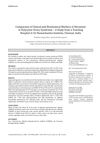 April 2021 in “Journal of evolution of medical and dental sciences”
April 2021 in “Journal of evolution of medical and dental sciences” Women with PCOS have higher levels of certain androgens, which are good at predicting excess hair growth.
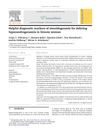 14 citations
,
September 2007 in “Steroids”
14 citations
,
September 2007 in “Steroids” The study concluded that androstendione and DHEA are important for diagnosing high male hormone levels in women with excessive hair growth.
22 citations
,
May 2006 in “Experimental and Clinical Endocrinology & Diabetes” Calculated testosterone values are reliable for assessing hyperandrogenemia in women, making direct measurement unnecessary.





